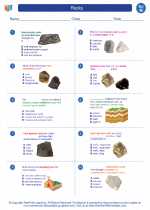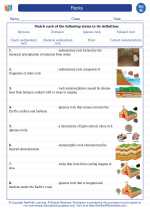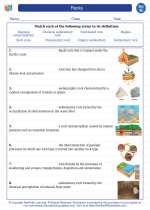Sea - A Detailed Explanation and Study Guide
Introduction to the Sea
The sea is a vast body of saltwater that covers about 71% of the Earth's surface. It is an essential part of the planet's ecosystem and plays a crucial role in regulating the climate, providing food and livelihoods, and supporting diverse marine life.
Characteristics of the Sea
- Saltwater: The sea is composed of saltwater, with an average salinity of about 3.5%.
- Depth: The sea has varying depths, with the deepest point being the Mariana Trench in the Pacific Ocean, reaching a depth of about 36,070 feet (10,994 meters).
- Temperature: The sea's temperature varies depending on the location and depth, with surface temperatures generally ranging from freezing in polar regions to tropical temperatures near the equator.
- Biodiversity: The sea is home to a wide range of marine organisms, including fish, mammals, invertebrates, and microorganisms, making it one of the most biodiverse ecosystems on the planet.
Importance of the Sea
The sea plays a vital role in various aspects of human life and the environment, including:
- Climate Regulation: The sea helps regulate the Earth's climate by absorbing and releasing heat, and influencing weather patterns and precipitation.
- Food Source: The sea provides a significant source of food for human consumption, with fish and other marine organisms being a staple diet for many coastal communities.
- Economic Value: The sea supports various economic activities such as fishing, shipping, tourism, and offshore resource exploration and extraction.
- Biodiversity Conservation: The sea is home to a diverse range of marine species, many of which are yet to be fully explored and understood, making it crucial for biodiversity conservation and scientific research.
Human Impact on the Sea
Despite its significance, the sea faces numerous threats from human activities, including pollution, overfishing, habitat destruction, and climate change. Understanding these impacts and promoting sustainable practices is essential for the long-term health and preservation of the sea and its ecosystems.
Study Guide
If you are studying the topic of the sea, here are some key areas to focus on:
- Describe the physical characteristics of the sea, including its depth, temperature, and salinity.
- Explain the importance of the sea in regulating the Earth's climate and supporting marine life.
- Discuss the human impact on the sea and the measures that can be taken to protect and conserve this vital ecosystem.
- Explore specific examples of marine biodiversity and the ecological relationships within the sea.
- Investigate the economic, social, and cultural significance of the sea for coastal communities and global industries.
By understanding the complexities and significance of the sea, you can gain a deeper appreciation for this essential natural resource and contribute to its conservation and sustainable use.
.◂Science Worksheets and Study Guides Eighth Grade. Rocks

 Worksheet/Answer key
Worksheet/Answer key
 Worksheet/Answer key
Worksheet/Answer key
 Vocabulary/Answer key
Vocabulary/Answer key
 Vocabulary/Answer key
Vocabulary/Answer key
 Vocabulary/Answer key
Vocabulary/Answer key
